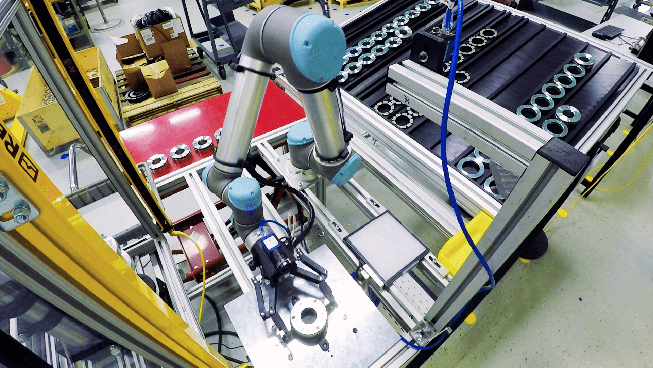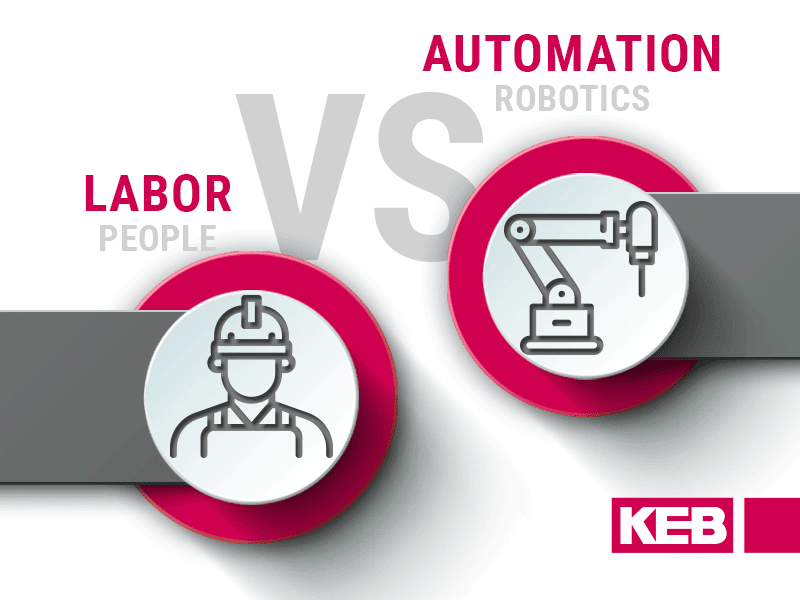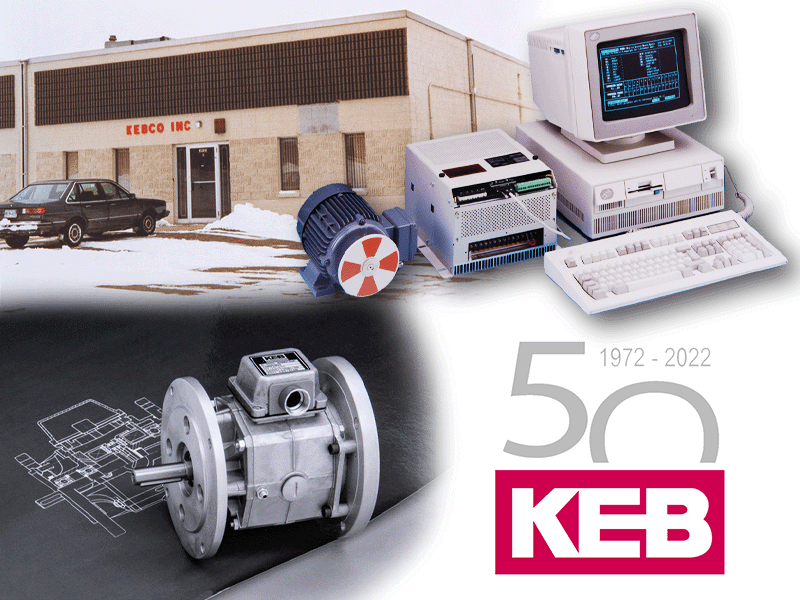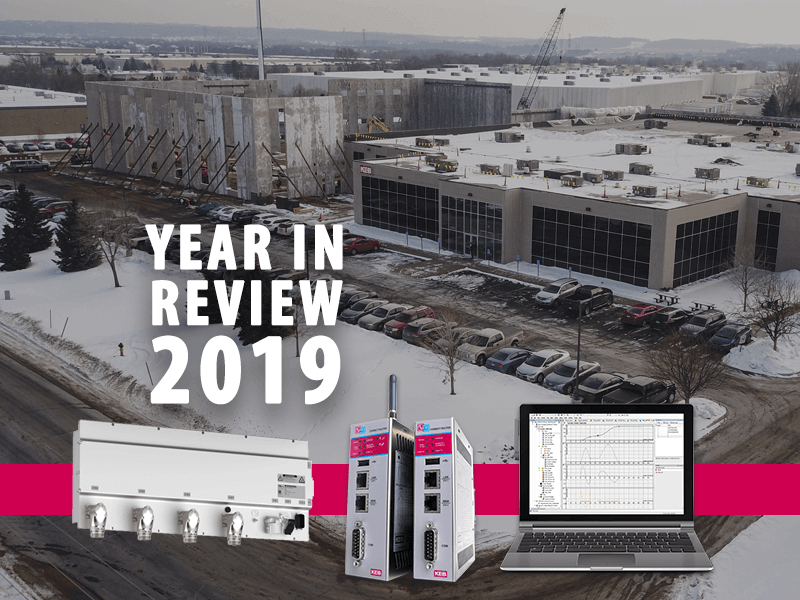The robotic, automated workforce
The automated workforce and future of automation is what we do here at KEB. Being a part of that industry means we need to be aware of the concerns that plague both supporters and detractors of robots and co-bots.

According to a recently published New York Times opinion piece, the tax bill enacted in 2017 has huge incentives for companies looking to invest in robotics and automation. The author goes on to suggest that this means a robotic, automated workforce is on its way (or already here), and is primed to displace an at-risk demographic of workers – that is, under-educated and under-skilled people in parts of the country where opportunity is scarce.
“These job losses are concentrated in blue-collar occupations such as machinists, assemblers, material handlers, and welders. Workers in these occupations engage in tasks that are being automated by industrial robots, so it is natural for them to experience the bulk of the displacement effect created by this technology,” Thomas Edsall says in his December 18th article.
He goes on to cite a variety of experts and sources that demonstrate the effects of robotics and AI on the workforce. You can read his full piece for more detailed information, but some of the most valuable takeaways can be found in the four points he pulls from a paper published by Jason Furman, a professor of economics at Harvard’s Kennedy School and Robert Seamans, a professor of management at N.Y.U. These points are:
- Automation can directly displace labor in the affected sector.
- Automation can create new jobs in new areas.
- Higher incomes increase demand for jobs throughout the economy, including in ways that are not directly linked to technology. For example, the share of workers in leisure and hospitality in the United States has steadily trended upward as household incomes have risen, enabling people to afford more restaurants and travel.
- Technology may replace specific tasks rather than entire jobs — leaving substantial room for human employment in jobs that will be changed by workers having a new tool at their disposal.
A few weeks later, A3 (the Association for Advancing Automation) published its response to the article from the perspective of an organization advocating for robotic research and development.
– the Association for Advanced Automation
“Here’s the truth: We aren’t using enough robots.”
“There seems to be this idea: If the robots hadn’t shown up, the jobs would have stayed. But nothing could be further from reality. Here’s the truth: We aren’t using enough robots.”
The author, Jeff Burnstein, the President of the Association for Advancing Automation, points out that businesses that do not look to automation to keep up with global trends may find themselves outpaced by foreign competitors. It’s the business that use automation to its fullest that keep their doors open, and keep their employees in the workforce.
…pundits like Edsall should use their platform to advocate for education initiatives, rather than lamenting the loss of opportunity…
Burnstein also makes the point that pundits like Edsall should use their platform to advocate for education initiatives, rather than lament the loss of opportunity because a company has failed to embrace the latest trends.
“Rather than bashing robots, politicians and pundits could better spend their time by advocating for STEM-based education initiatives, while also developing public-private partnerships around worker retraining, apprenticeships and manufacturing certification programs,” he writes.
My thoughts
The NYT piece seems to be drawing some shaky conclusions. While things in it may be factually correct – and I’m not an economist so I can’t say – they do not seem to be related. Saying the current tax bill is the cause for jobs being lost to robots is a false equivalency. Nothing in the piece leads me to believe that these tax credits can only – and are only – being applied to creating automation that specifically aims to lower a businesses’ personnel costs.
Placing blame on tax incentives is a red herring.
A lot in the A3 rebuttal resonates with me and with what we see with our customers and their needs. Automation is there to assist in tasks that are very dangerous or very monotonous. In both scenarios the potential for human error is great, and the possible outcomes catastrophic.
KEB and companies like us can help companies faced with this. We offer the products that assist in automation and the tools to maintain them. You don’t need an advanced engineering degree to introduce robots into your installation and enjoy the benefits of speed, safety, reliability.
Offering internships, participating in job fairs, speaking at conferences advocating for the future of industrial manufacturing can do a lot to ensure the American workforce is able to support not only the livelihoods of Americans, but the US trade in a global market.
It’s not the responsibility of any company to ignore technological advances in order to continue staffing obsolete positions. However, companies should take steps to influence curriculum as they are able. Offering internships, participating in job fairs, speaking at conferences advocating for the future of industrial manufacturing can do a lot to ensure the American workforce is able to support not only the livelihoods of Americans, but the US trade in a global market.
Let's Work Together
Connect with us today to learn more about our industrial automation solutions—and how to commission them for your application.



